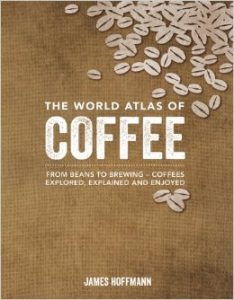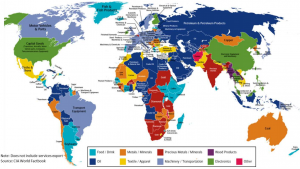
By: Ben Hart
In 2016, nearly sixteen million Americans travelled abroad, that’s only about five percent of the United States’ population, however. “Why are so few Americans travelling abroad?”, you might ask. This map may be the answer why.
Americans love this country, we cherish it, become attached to it almost. We like what is comfortable and easy, that’s just a part of our culture. And for the most part, travelling is not easy. We give so many reasons not to travel, like the weeks of planning it takes, the huge amounts of money, not to mention the stress and worry, for most Americans to even consider it. However, behind all of these excuses we give not to travel underlies one universal reason: we are afraid. Our fears of the unknown inhibit our sense of wonder and innate curiosity we have about the world. I would argue that a large majority of Americans have a real interest in learning more about our world through travel, but their fears about being dropped into a foreign country full of strangers, language barriers, culture shock, and dangerous people and activities stops us from ever booking that plane ticket. This map reinforces that belief.
Within this map, there are nine categories a country can belong to, which include accident, drowning, homicide, car accident, disaster, terrorist action, drug related, suicide, motorcycle accident, and air accident. Each country is a single block of color, and each color represents one category. One question that comes to mind at first glance is: why is most of Africa not represented? I think the obvious answer here is that very few Americans travel to Africa, thus the U.S Department of State, where the data was taken from, does not have any data to represent those countries. The map utilizes a Mercator projection, which enlarges the poles and “shrinks” the equator, and places the United States to the left. If the map were to employ an “America centric” projection, with the United States in the center, it would have to split up Asia. Since countries other than the US are the main subject of this map (although Americans are also the subject), it makes sense to put the US to the left.
That being said, there are a lot of things I dislike about this map. The first of these is that this map enforces a lot of stereotypes about the dangers of travelling abroad to places deemed “unsafe” by American society. As Americans, we consider every so-called “third world” country (countries in Africa, South America, Asia, Southeast Asia) to be unsafe, full of drugs and terrorism. The map reinforces a lot of stereotypes about the dangers of non-western countries. Some American stereotypes about the third world include: Mexico: Murders and drug dealers, South America: drugs and bad roads (like the infamous Road of Death in Bolivia) Middle East: terrorism, Africa: unsafe, poor, Southeast Asia: drugs, prostitution, motorcycles. All of these previously held stereotypes about how dangerous the rest of the world are highlighted, in bright pastel colors in this map. This map only makes Americans fear travelling abroad even more. However, this should not be the case. After looking at the actual data from the US Department of State and other sources, I found out that this map is incredibly biased and placed out of context.
Here is why.
Over the past thirteen years, only 827 Americans have died of unnatural causes overseas each year. Considering how many Americans travel abroad each year, the chances of an American dying while travelling abroad is 0.00005169%. That number is incredibly small. However, that number is not represented at all in this map. This map severely inflates this fact by making it seem like a lot of Americans die abroad and deem certain countries unsafe simply by assigning it a color. The average viewer will look at this map and think “So many Americans die abroad, the whole world is dangerous”, when that simply is not true. This map perpetuates the fear that Americans have about travelling abroad, when in reality a very small percentage of Americans die.
I’d like to point out another reason why this map is deceiving. The way this map is laid out makes it so that each country can only be defined by one category. This leaves room for a lot of error concerning the accuracy of the data represented. For example, Mexico had the highest number of suicides by Americans compared to any other country (250 since 2002), however, that fact is ignored, since more Americans die by homicide (843). This is still an important fact, although that simply cannot be represented through this map. Here is another interesting point: Mexico has the highest death rate among American visitors. However, this is not something that is represented in the map. In fact, larger countries like Russia, Canada, and Brazil (large swaths of color) make it seem like those countries have higher death rates simply due to the fact that they are big, vibrant, and immediately catch your attention.
A question that arose in my mind when I was analyzing this map was, why would the U.S. Department of State create a map like this? I think that the creators of this map did not have the intention of scaring off cautious travelers by providing them with information that may influence their decision on where to travel, if at all. I do think however, that the creators wanted to ensure the safety of American citizens through a visual display of the dangers of foreign countries. Although I don’t think they realized that this map likely dissuades many Americans from ever getting on an airplane because they deem the rest of the world unsafe. The creators were perhaps unaware of the implications that came along with such influential information.
Now, let’s point out this massive yellow swath of color that overwhelms most of Europe and Australia with the label “suicide”. The overwhelming yellow color generates a question in the mind of the viewer: why are so many Americans going abroad to commit suicide? Suicidal people are often plagued by a number of issues and problems that establish a feeling of helplessness and extreme sadness in the mind. Sometimes, these individuals actually run away from their problems by getting as far away from them as possible: international travel. One of the most common places for Americans to do this is Europe. In addition to this, living in a foreign country is often times lonely. Both the language and the culture barrier makes it hard for “outsiders” to fit in. Not surprisingly, suicide rates abroad are the highest among the elderly and the young. A lot of these elderly include retirees and expats. The final reason for the high suicide rate is that many Americans have dual citizenship with European countries, however, when they return home they often feel out of place or like they don’t fit in with either country or culture.
Although I dislike this map for a number of reasons, it does make a point. That point being, a few Americans, each year, do actually die abroad, and a level of caution and care should be taken to ensure personal safety. The world is not completely safe, but most of it is not dangerous either. It’s somewhere in between, and this map fails to realize that fact. What this map has made me realize is that a majority of Americans simply don’t travel abroad either because of a lack of interest or a fear to do so. In addition, this map hints at the fact that Americans typically don’t travel anywhere besides Europe. Travelling to places like South America or Southeast Asia are almost considered taboo because we think they are too dangerous, thanks to both society’s warped view of the rest of the world, and resources like this map.
Sources:
https://travel.trade.gov/research/monthly/departures/
https://www.huffingtonpost.com/william-d-chalmers/the-great-american-passpo_b_1920287.html
https://thepointsguy.com/2017/01/record-number-of-americans-traveled-abroad-2016/


 Waking up Saturday morning to witness the greatness of The English Premier League is done by millions of Americans each and every week. For some it is somewhat of a religion, while for others it may just be a slight interest. But one thing is for sure, the Premier League is by far the world’s most popular and supported soccer competition. It is made up of twenty clubs per season that each play thirty-eight games and ultimately, the team with the most points is concluded the winner. While the Premier League is limited to clubs within the United Kingdom, thenumber of supporters outside of the UK’s borders is incredible. Not only has the league been the leader in TV viewers and fan support for several years, but the backing for every club is prevalent around the world. However, why do certain clubs have more support from North Americans than from South Americans? Why do certain clubs have such popularity in the United States? Questions like these are represented and answered by the Premier League follower map.
Waking up Saturday morning to witness the greatness of The English Premier League is done by millions of Americans each and every week. For some it is somewhat of a religion, while for others it may just be a slight interest. But one thing is for sure, the Premier League is by far the world’s most popular and supported soccer competition. It is made up of twenty clubs per season that each play thirty-eight games and ultimately, the team with the most points is concluded the winner. While the Premier League is limited to clubs within the United Kingdom, thenumber of supporters outside of the UK’s borders is incredible. Not only has the league been the leader in TV viewers and fan support for several years, but the backing for every club is prevalent around the world. However, why do certain clubs have more support from North Americans than from South Americans? Why do certain clubs have such popularity in the United States? Questions like these are represented and answered by the Premier League follower map.


